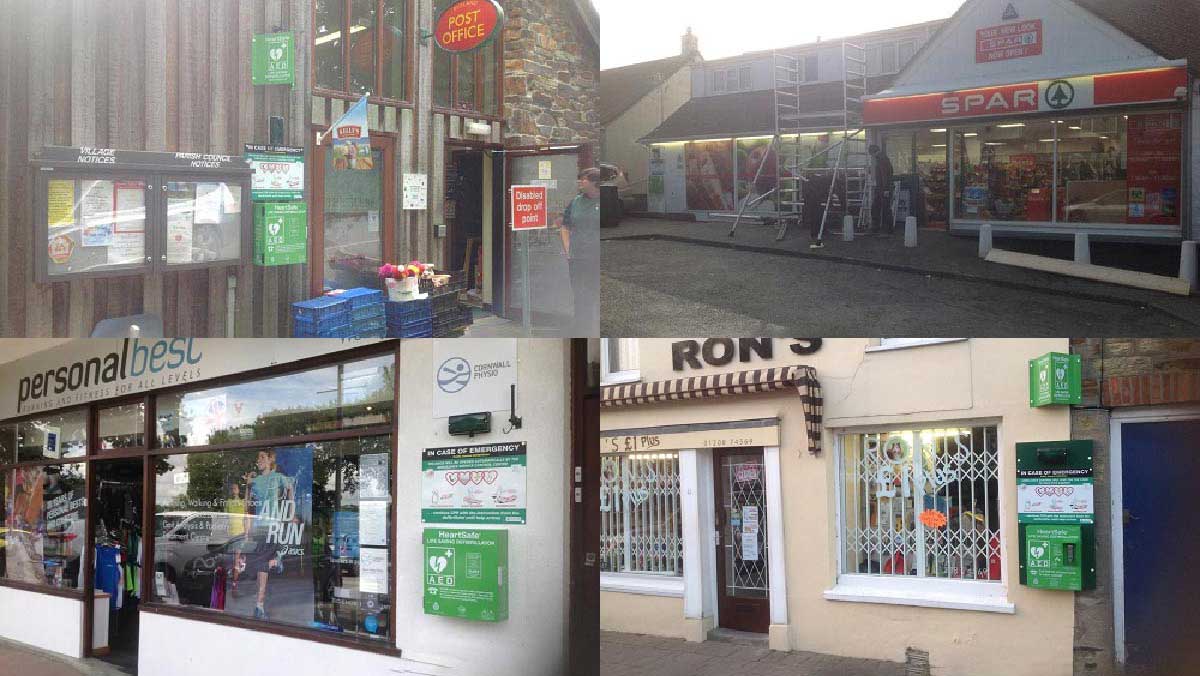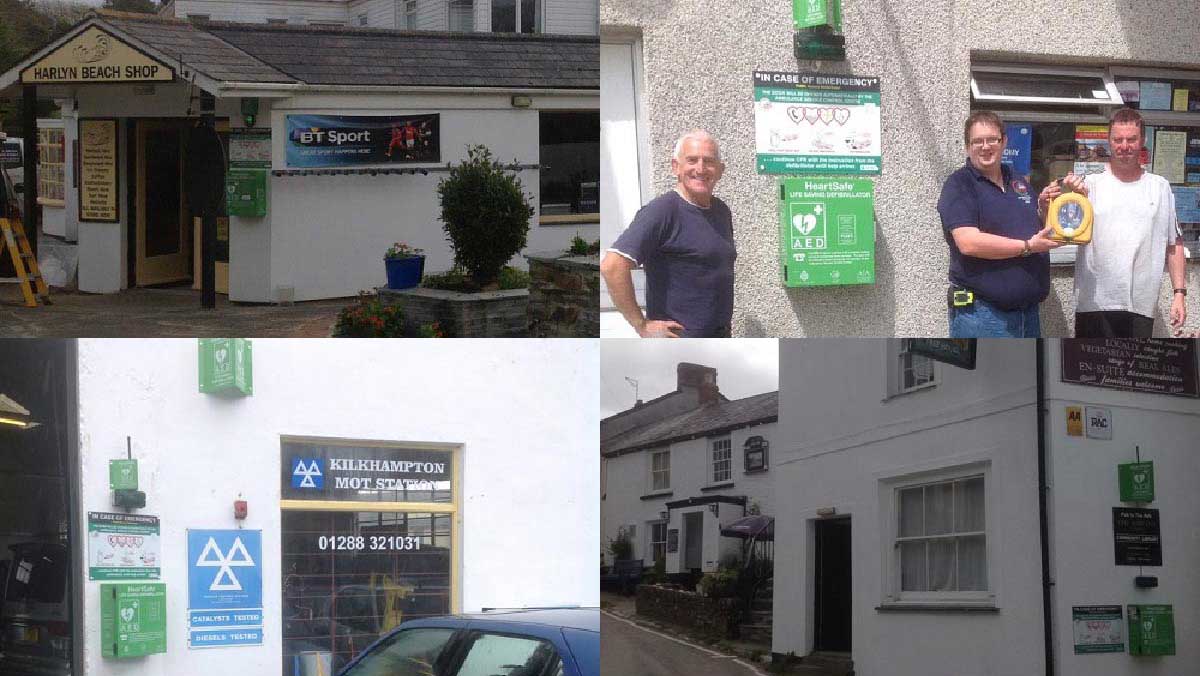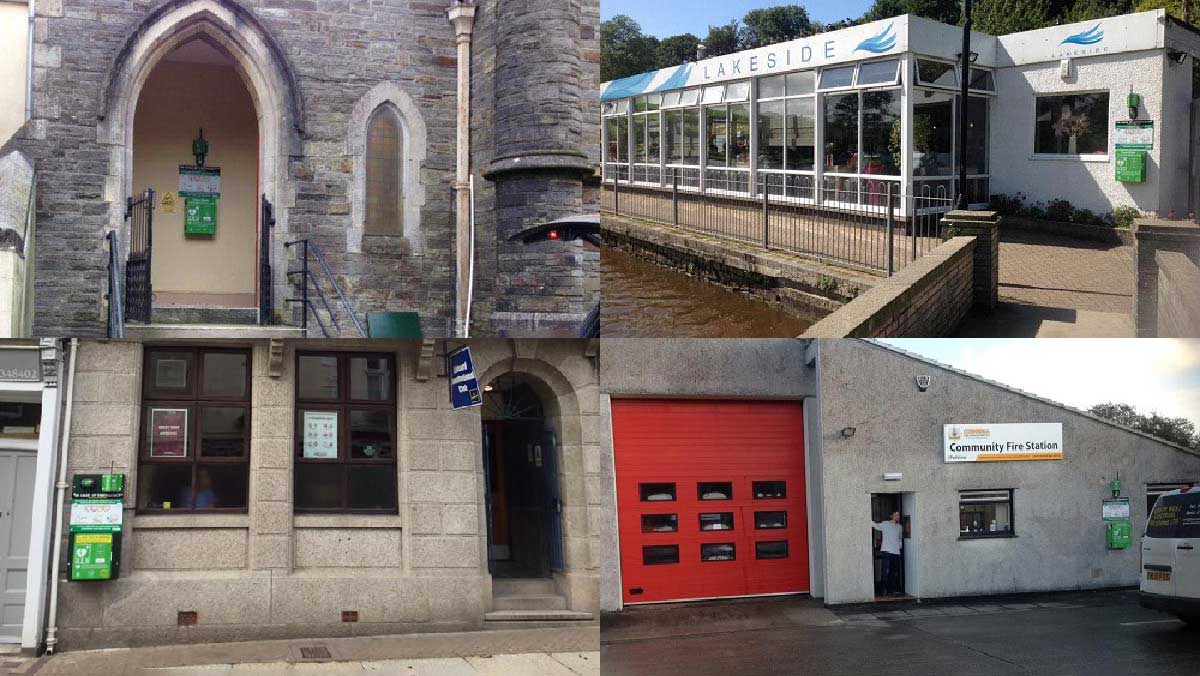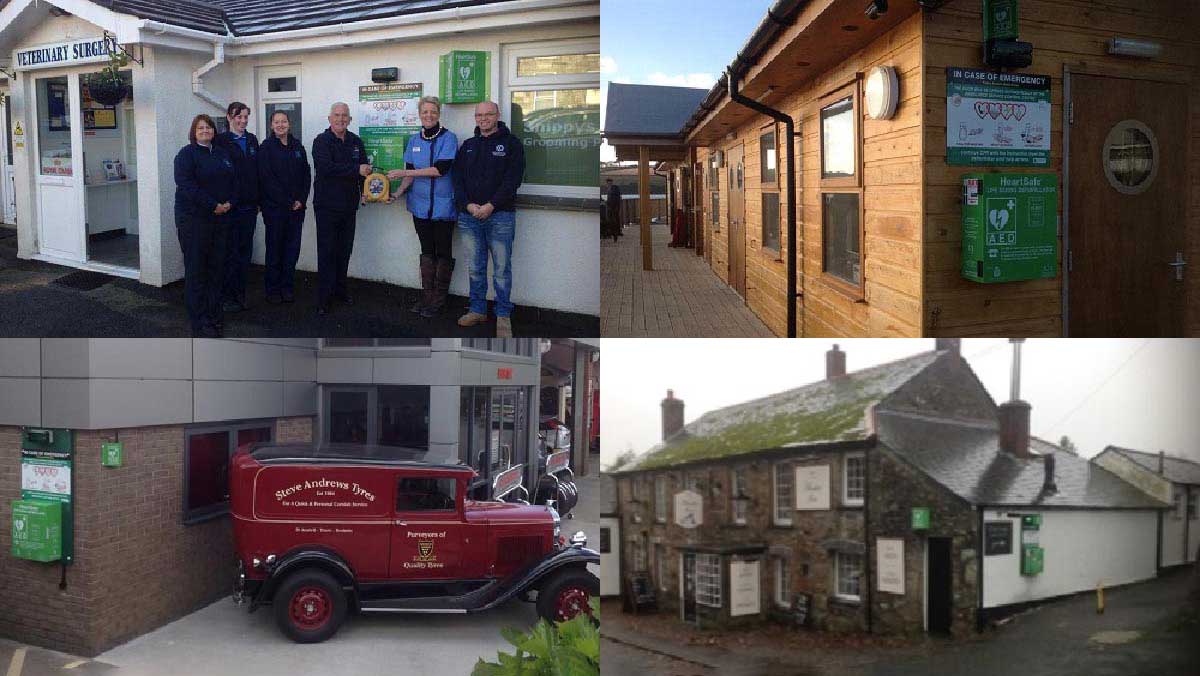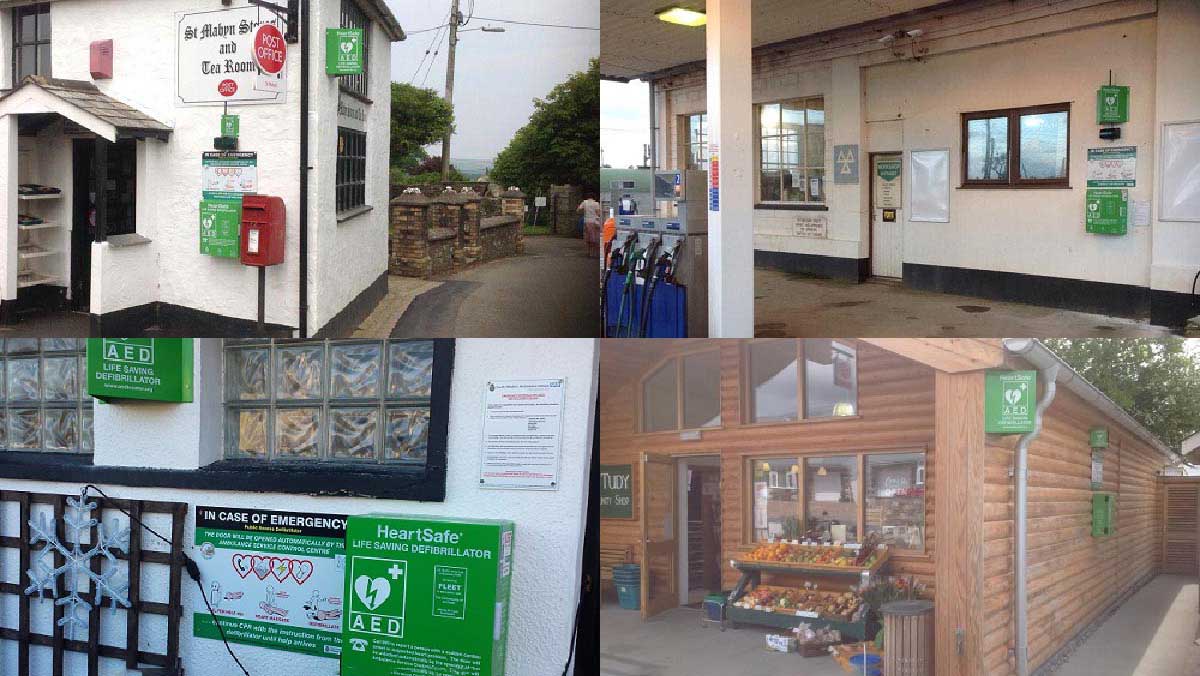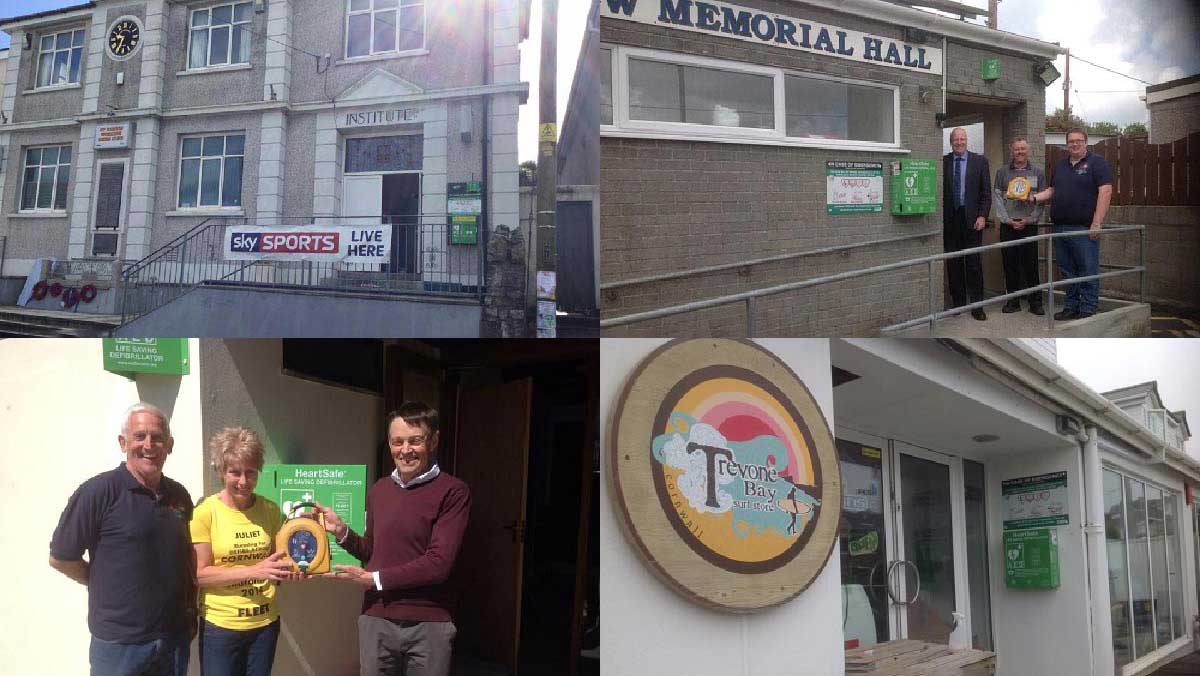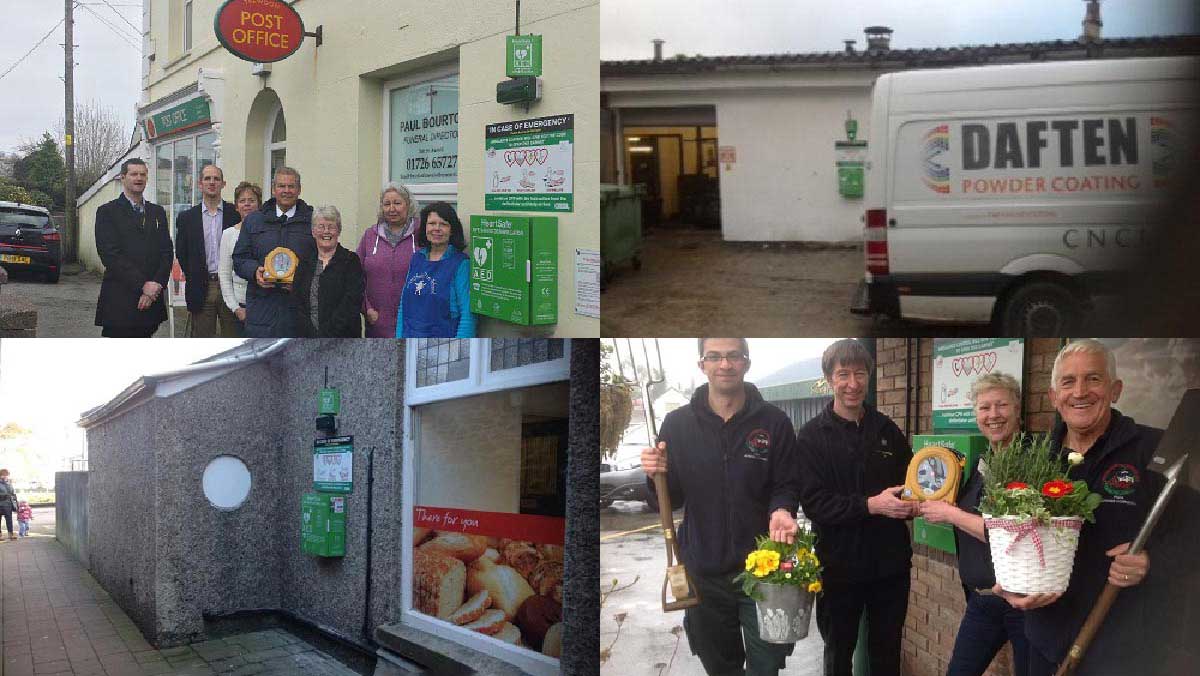Public Access Defibrillators
Sudden Cardiac Arrest
Every day 250 people in the UK suffer a Sudden Cardiac Arrest, of these only 12 will survive. These are not just old and unfit people, the young and fit are just as at risk. The chance of survival depends on how quickly bystanders act. The only effective treatment for cardiac arrest is defibrillation, however it is vital that CPR is started as soon as possible after dialing 999. For every minute that passes with nobody doing anything, the chances of survival drop by 10%, by the time a paramedic arrives, they are fighting the odds, especially in a rural county like Cornwall. Unfortunately, many times when paramedics arrive it is too late to save the person, they have died because bystanders have not started CPR.
It doesn't have to be this way, in areas where Public Access Defibrillators are installed the survival rate can be raised to 50%, thats 125 people instead of 12. Communities need to be aware of how to spot a sudden cardiac arrest and what to do.
Our aim is for Cornwall to be covered in a network of defibrillators, with communities confident in how to use them, so that more lives can be saved.
What to do
Check Airway
Gently tilt the head back to open the airway and check there is no obstruction.
Check Breathing
Listen to the patient's mouth, observe their chest for a rise and fall.
Get help on the way
You need backup and quickly, get a paramedic on the way before you do anything else.
Hard and Fast
You need to achieve about 100 presses a minute to a depth of 6 - 10cm.
Rescue Breaths
If you have been trained then do 2 rescue breaths for every 30 compressions.
Turn the defibrillator On
Press the green button and listen to the instructions
Apply the pads to the patient's bare chest and follow the instructions from the defibrillator
Ensure the chest is clean of hair and dry.

Recognise that action is required
When a person becomes unconscious and stops breathing you need to act.

Call for help
Dial 999 and ask for an ambulance.

Start CPR
Start Chest Compressions by placing overlapping hands in the centre of the chest.

Defibrillation
If a bystander is able to get a public access defibrillator this will significantly improve the chances of survival. The 999 operator will direct you to the nearest defibrillator, if it is within a reasonable distance.
Keeping going until a Paramedic arrives
Keep going with CPR and rescue breaths (if trained), the defibrillator will confirm your compressions are fast enough and hard enough. Listen to the defibrillator, it will want to check and see if it can deliver another shock every couple of minutes.
You can find out more information about Public Access Defibrillators from the UK Resuscitation Council
